Capsule Review: Chevrolet Spark EV
There comes a moment when it’s time to try something new. Like switching to an iPhone after using a Nexus and promptly learning that the iPhone can bend. Or wearing a mechanical watch rather than a quartz watch, only for it to stop ticking after it was on a nightstand for the weekend. Moving to a house from an apartment and dealing with the perils of home ownership, such as property taxes, having to clean gutters, and the inability to have the building manager fix the broken kitchen faucet. My trying something new involved testing an electric vehicle for a week.
After all, I live in the San Francisco Bay Area, home to Tesla Motors and ZAP (the hard-core TTAC B&B should know them; there’s even a road test on here of their cars from way back when), and home to dinner parties with prolonged debates about whether electric car ownership is worthwhile. “What if you’re coming home from work and you forgot your phone? You’ll run out of charge retrieving the phone and then there’s no way of getting home.” an attendee might say, while his counterpart might reply, “Well, I’ve saved hundreds of dollars on gas and I haven’t had to visit a gas station. And are these chips and dip vegan?” Since I get asked the electric car question a lot as the “car guy” among my friends, I decided once and for all to test an electric car.
To live out my electric car experience, Chevrolet had a Spark EV available in the Northern California press fleet, which was delivered to me with 301 miles on the odometer. 55 of those miles involved delivering the car to my driveway from the press car place. So I was effectively testing a brand-new car. Additionally, it should be noted at this point of the review that most of the country cannot buy the Spark EV. It’s only sold in California and Oregon, where the metropolitan areas tend to have a more developed electric vehicle infrastructure. As a result, this review applies to less than fifteen percent of the population, so those of you not within a 10-hour drive of San Francisco don’t have to care as much.
The first thing I did when I got the Spark was test the performance of the car using the 22 miles of range it arrived with. Its performance was surprisingly good thanks to the torque from the electric motor. It could go from 0-60 miles per hour in around seven seconds, which is on par with most six-cylinder midsize sedans. Chevrolet also got the suspension tuning very right, making the Spark quite fun to drive at low speeds. There’s even a “Sport” button which sharpens up throttle response. With this car, it’s actually possible to create an autocross course around your housing development, and have actual fun doing it, without waking up the neighbors. Just make sure there isn’t too much tire squeal.
Secondly, since spirited driving tends to use up much of the battery, I needed to ensure I could charge it at home. Now, to make electric car ownership worthwhile, it helps to have a 240V outlet in your home to ensure your electric vehicle charges faster. Usually, an electric car can go from empty to fully-charged in one night (usually within 8 hours) with the 240V setup. Thankfully I had the means to “improvise” a home charging facility for the Spark with the 120V outlet that came with the Spark. However, most homes have 120V outlets, which is what my house had. With a 120V setup, it usually takes about 12 to 18 hours to go from empty to a full charge.
Regarding styling, the Spark EV more or less looks like any other Chevy Spark on the road. For me, that’s not necessarily a good thing, as many people will believe your car is a lot cheaper than it actually is. Most people will also believe that you’ll be driving a rental car. I had the fortune to have a Jaguar XF Sport in the driveway before I got the Spark EV, and most of my neighbors did a double take when passing by and noticing the red Spark in place of the XF. Personally, I don’t think homeowners’ associations will tolerate a Spark EV in the driveway.
Inside, the Spark is airy and has plenty of visibility. It is a narrow car though, with the potential to rub shoulders with your front passenger and the rear seat only accommodating two people, but there is plenty of headroom. The trunk only has enough space for two airplane carry-ons. My test car had the “leatherette” (I consider it vinyl) seats that I didn’t like, largely because of how the material felt and I didn’t like sitting in them after the car had been out in the sun. Personally, I’d try to get cloth seats, but that involves “downgrading” to the 1LT trim level for around $400 less, though the steering wheel won’t be leather-wrapped.
On the highway, the Spark had no trouble keeping up with other cars or getting up to speed quickly. However, you will definitely hear the road noise at speeds above 45 mph. If you’re driving on the highway in periods of low traffic with speeds of 65 to 70 miles per hour, you will hate being in the car. I tried to turn up the stereo to compensate for all that road noise, but it didn’t help things and added to the noise pollution. As a result, the Spark EV is a car you’ll prefer in traffic jams and off-highway environments.
I have to admit I didn’t use OnStar with the car (the OnStar Turn-by-Turn navigation is free for 3 years), so I don’t know if it’s a viable alternative to an actual navigation system. To get navigation maps projected onto the dashboard screen, Chevrolet MyLink can connect to your smartphone and garner the necessary information using the BringGo app. Downloading and installing the app on my smartphone would have been $50 so I didn’t try it out.
As for the money saved on fuel costs by buying the Spark, the car’s Monroney sticker states that it’s possible to save $8,500 in fuel costs over 5 years compared to the average new vehicle which gets 24 mpg and costs $11,000 to fuel over five years. The $8,500 figure comes from driving 15,000 miles per year at 12 cents per kilowatt-hour. On the other hand, when researching potential cost savings on FuelEconomy.gov, the website gives me an estimate of $5,250 saved over five years, but that’s based on “45% highway, 55% city driving, 15,000 annual miles and current fuel prices.” I’m assuming the Monroney value estimates the price of gas becoming higher with time while the FuelEconomy.gov number tends to fluctuate. But only you can estimate how much money you can save based on your driving habits and knowledge of local charging stations.
When I had to ensure the Spark had a full battery, I fully charged the Spark EV at my house twice during the week I had it, and the electric bill only went up $10 compared to the same period last year. I’m not quite sure if the Spark contributed the extra money to the electric bill, but I did charge it during peak usage hours once, which may have contributed to the total. Also, many of my local hangouts had charging stations where I could park and charge the car for free for a limit of 2 or 3 hours. As a result, I largely didn’t have to pay for the car’s electricity when running errands. (On a side note, the Plugshare app came in handy when finding charging stations.)
Also, my test car had the “fast provisions” charging capability option, it enables the Spark EV to recharge 80 percent of the battery within 20 minutes utilizing the SAE Combo DC fast charging stations. Unfortunately, there were no SAE Combo DC fast chargers near me to sample. Nevertheless, having one of these nearby will help tremendously with range anxiety, especially if your daily commute is more than 60 miles round-trip.
The MSRP of my test car was $28,785 (before the $7,500 tax credit), with the sole option being the $750 “fast provisions” charging capability and an $825 destination charge. It also includes two years of maintenance. At that price point, Nissan has the Leaf which starts at $29,860 including destination, Ford has the Focus EV at $29,995 with destination, and FIAT’s 500e at $31,800. With the $7,500 federal tax credit and a California tax credit of $2,500, the Spark EV can easily come in below $20,000. (Unfortunately, Oregon doesn’t offer an electric vehicle tax credit.) Furthermore, the Spark EV’s lease rates are reasonable and close to the lease rates of the aforementioned electric vehicles, though their advertised leases are for 36,000 miles. On Chevrolet’s website, the current offer is $176 a month (plus taxes and fees) with $0 due at signing for a 3 year, 30,000 mile lease.
All in all, if you’re among the fifteen percent of the American population considering the Spark EV, I would advise buying it as strictly a commuting and errands car. It would make the perfect second or third vehicle if fuel costs are getting out of hand, you drive around 50 miles every day, and you would like to minimize trips to the gas station. With its $176 per month lease deal with $0 due at signing, the Spark EV is worth thinking about if considering a Leaf, the lease rate of which doesn’t come close. Even if you plan to buy an electric car, the Spark is a good candidate as the net price can go below $20,000 with the federal and California tax rebates.
And if you don’t live in California and Oregon and you’re still considering the Spark, come to nice and sunny California and make a vacation out of test driving the Spark EV. Though be wary of any dinner party invites you come across if you tell people your reason for visiting California. The menu has a good chance of being completely vegan.
Satish Kondapavulur is a writer for Clunkerture, where about a fifth of the articles are about old cars and where his one-time LeMons racing dreams came to an end once he realized it was impossible to run a Ferrari Mondial. He also learned that it’s surprisingly easy to sneak up behind people in an electric car, especially cyclists.
More by Satish Kondapavulur
Latest Car Reviews
Read moreLatest Product Reviews
Read moreRecent Comments
- Analoggrotto Does anyone seriously listen to this?
- Thomas Same here....but keep in mind that EVs are already much more efficient than ICE vehicles. They need to catch up in all the other areas you mentioned.
- Analoggrotto It's great to see TTAC kicking up the best for their #1 corporate sponsor. Keep up the good work guys.
- John66ny Title about self driving cars, linked podcast about headlight restoration. Some relationship?
- Jeff JMII--If I did not get my Maverick my next choice was a Santa Cruz. They are different but then they are both compact pickups the only real compact pickups on the market. I am glad to hear that the Santa Cruz will have knobs and buttons on it for 2025 it would be good if they offered a hybrid as well. When I looked at both trucks it was less about brand loyalty and more about price, size, and features. I have owned 2 gm made trucks in the past and liked both but gm does not make a true compact truck and neither does Ram, Toyota, or Nissan. The Maverick was the only Ford product that I wanted. If I wanted a larger truck I would have kept either my 99 S-10 extended cab with a 2.2 I-4 5 speed or my 08 Isuzu I-370 4 x 4 with the 3.7 I-5, tow package, heated leather seats, and other niceties and it road like a luxury vehicle. I believe the demand is there for other manufacturers to make compact pickups. The proposed hybrid Toyota Stout would be a great truck. Subaru has experience making small trucks and they could make a very competitive compact truck and Subaru has a great all wheel drive system. Chevy has a great compact pickup offered in South America called the Montana which gm could make in North America and offered in the US and Canada. Ram has a great little compact truck offered in South America as well. Compact trucks are a great vehicle for those who want an open bed for hauling but what a smaller more affordable efficient practical vehicle.




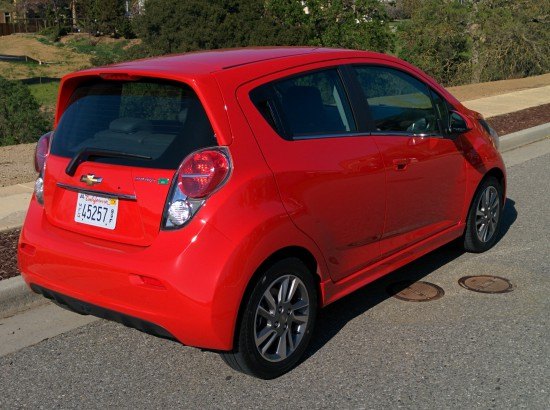



























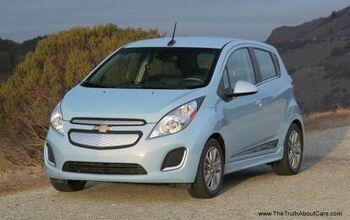

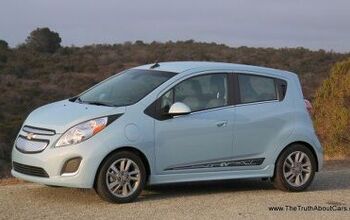
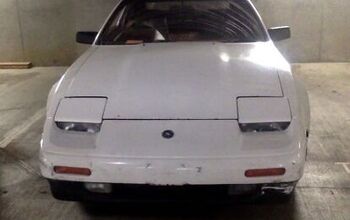








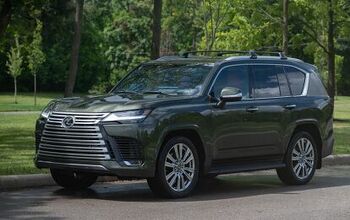
Comments
Join the conversation
I'd love to see a pic of that gauge cluster online - I bet it's much nicer than the ATS. Oh deadweight...
Free charge stations aside, I don't see the point. And free charging stations won't always be free. Assuming a gasoline Spark gets 33mpg, $10 worth of fuel gets you 100 miles. From this article, I don't see where actually *paying* for all the electricity used works out to